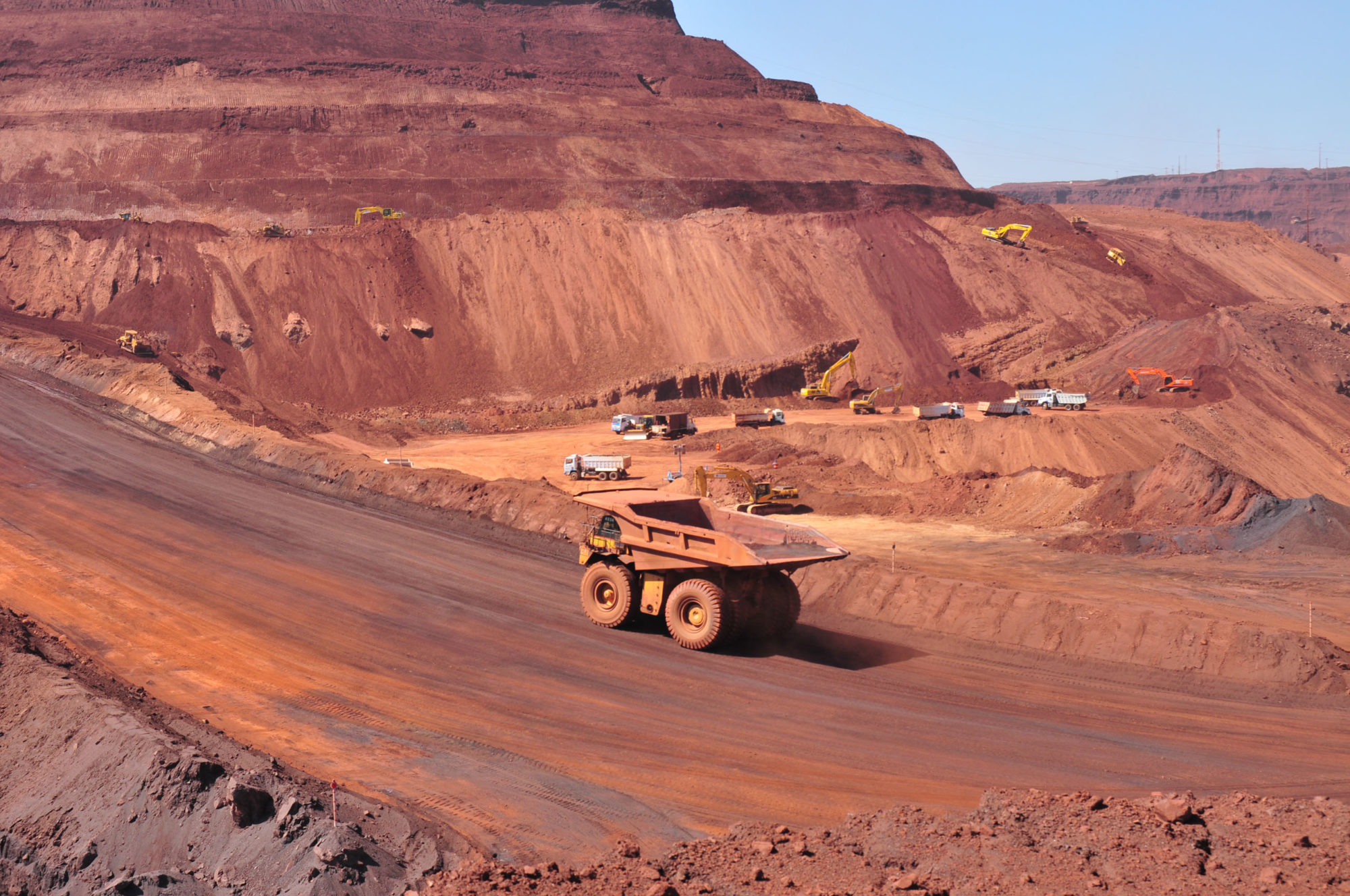The Serra Norte iron ore mining area is part of Vale’s Northern System, and is located in the municipality of Parauapebas, which is in the state of Pará, in northern Brazil. The N4W, N4E and N5 mines are currently operating, generally referred to as the Carajas mining complex. Serra Norte is distinct from the other two Northern System mining areas in Pará – Serra Sul in the municipality of Canaã dos Carajás which primarily includes S11D, one of the world’s largest in-pit crushing and conveying mines, and Serra Leste in the municipality of Curionópolis.
The current Serra Norte life of mine plan runs from 2022 through 2038. The ongoing mine plan involves opening new mining areas for extraction at the currently inactive N1, N2, and N3 orebodies. Additionally, Plant 1 is undergoing a conversion to a 100% natural moisture process, which is expected to be completed between 2024 and 2025. Mining at Serra Norte is by traditional open pit mining methods. Ore is hauled by off-road trucks to strategically positioned primary crushing facilities, and waste is hauled to waste dumps. Plant 1 has a mixed beneficiation process, 55% wet process and 45% dry while Plants 2 and 3 have a 100% natural moisture process. The current nominal production rates are 85 Mt/y for Plant 1, 40 Mt/y for Plant 2, and 20 Mt/y for Plant 3.
The Serra Norte mines have been operating since 1984 and being expanded laterally and in depth, with simultaneous mining of more mineral bodies. Consequently, the average haulage distance is increasing. Crushers have previously been implemented for the run of mine (ROM) ore in the pits for use with conveyor belts, to reduce haulage distances. There are also ongoing projects for the installation of new crushers with the same objective. Also, there are projects under study for the implementation of semi-mobile crushers with conveyor belts for the waste. In regions where is a needed vibration control in rock blasting, surface miners are also being used. There is a very large truck fleet in the Carajas mines which has included the electric drive Komatsu 227 t 830E and 290 t 930E plus the 363 t Liebherr T 282B, as well as mechanical drive 231 t Caterpillar 793Ds and 363 t 797Fs.
In September 2021, Vale also started operating six autonomous haul trucks in the Carajás iron ore complex as part of its main fleet, which increased to 10 by end 2021 and is set to hit 37 in 2024. Capable of moving 290 t at a time, the Komatsu 930E-AT autonomous diesel trucks with electric drive were tested in an isolated area in Carajás since 2019 before moving to the N4E mine for final testing then live production.
In April 2022 in its 20-F Annual Information Form for the full year 2021, Vale also added that a new trolley assist system is “expected to operate in 2023” at the Carajas mines. This would reduce emissions from the Carajas electric drive truck fleet through cutting diesel usage, and will also have the distinction of being the first trolley assist line in Brazil. It should also increase productivity through higher on ramp speeds.
Other mines in the Americas are also installing or planning to install trolley lines including in Panama at First Quantum Minerals’ Cobre Panama copper mine (running with large Liebherr T 284 fleet), plus in Canada at the Copper Mountain Mining Corp copper operation in BC (running with Komatsu 830E trucks and ramping up) and Agnico Eagle’s Detour Lake gold mine in Ontario (has Caterpillar 795F AC fleet and is in development); then in Chile at Antofagasta Minerals’ Los Pelambres copper mine (has Komatsu 930E fleet, in development) and in Mexico at Newmont’s Penasquito gold mine (has Komatsu 930E fleet, also in development).











